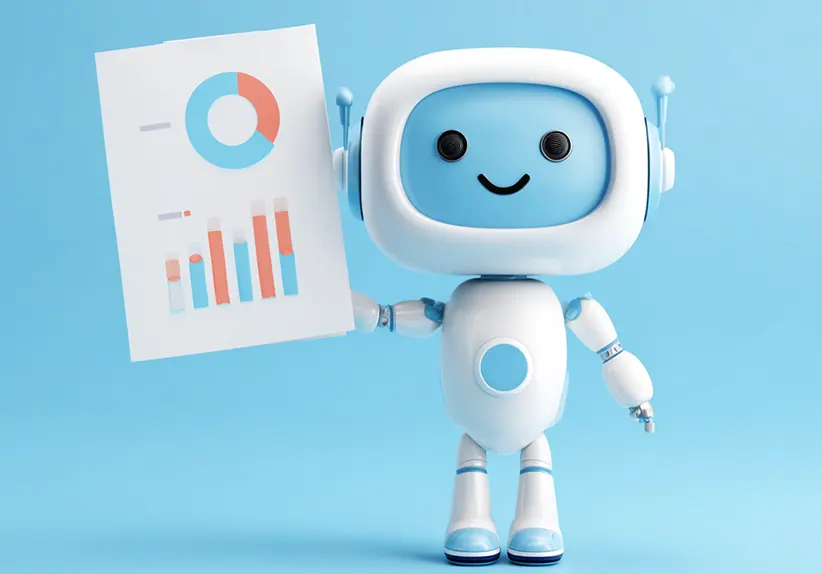AI Chatbots for Business: Real-World Insights from Customer Surveys

Sara Williams

In today’s fast-evolving digital landscape, AI chatbots for business have moved from novelty to necessity. A recent report from CMSWire sheds light on critical trends shaping chatbot adoption, offering powerful guidance for organizations aiming to drive impact with real-world results.
Chatbot Adoption Is Accelerating
According to CMSWire’s 2025 Digital Customer Experience (DCX) Report, AI chatbot usage in customer service channels has jumped from 30% to 40%, clear evidence that generative AI is becoming more widespread in business operations. Additionally, chatbots are now among the top tools used by CX professionals, rising to the 12th most common solution in 2025, with a majority of respondents reporting implementations underway or complete.
Key Objectives Driving Chatbot Investment
CX teams aren’t investing in chatbots just for automation. They’re also targeting strategic gains:
-
Efficiency: Speed in handling routine queries is a major draw.
-
Self-service empowerment: Businesses want AI agents that let customers help themselves when possible.
-
Personalized support: Organizations increasingly leverage AI chatbots to deliver tailored responses at scale.
These aims are informed by real-world feedback and data, ensuring chatbots deliver tangible value.
Challenges & Barriers to Higher Adoption
Great chatbot performance isn’t a given. The report highlights key hurdles:
-
Data fragmentation: Chatbots need unified, accurate customer data to perform well.
-
Gatekeeper aversion: Customers often resist interacting with bots unless they’ve been pre-conditioned. Transparency about capabilities and wait times can improve trust and uptake.
Best Practices for Business-Focused Chatbot Success
1. Start with a Clear, Realistic Use Case
Begin by targeting high-volume, low-complexity interactions, like FAQ resolution or order status, and ensure smooth handoffs to agents for edge-case or emotional conversations. This keeps CX human, where it counts.
2. Invest in Quality Data Infrastructure
According to TechRadar, 78% of organizations lack the data readiness needed for AI agents, and subpar data means bots underperform. Build unified, accurate, and governed customer profiles to enable meaningful chatbot personalization.
3. Set Clear Expectations with Transparency
Reduce gatekeeper aversion by clearly communicating when bots are available and what they can do. Letting users know approximate wait times or providing fallback to live agents fosters trust and adoption.
4. Measure and Iterate Using Real Usage Metrics
Track chatbot-specific metrics, such as deflection rate, resolution time, escalation frequency, satisfaction scores, and handoff quality, to guide continuous refinement.
5. Balance Automation with the Human Touch
Bots handle the routine so humans can engage in high-value interactions. Always provide easy, seamless transitions to live agents, especially for emotionally sensitive or complex issues.
How CrafterQ AI Chatbots Solve These Real-World Challenges
The survey makes one thing clear: businesses want AI chatbots that are not just automated, but effective, trustworthy, and connected to the right data. The CrafterQ AI Chatbot Platform is built with these needs in mind, and directly addresses the survey’s key findings.
Features That Align with CX Priorities
-
Trained on Your Data, Anywhere It Lives: CrafterQ connects to your website, knowledge base, CRM, and other business systems. CrafterQ eliminates the data fragmentation problem that survey respondents flagged. Unified data access means more accurate, personalized answers.
-
Multi-Channel Deployment: Deploy your chatbot on your website, customer portal, mobile app, and even messaging platforms, to support the omnichannel engagement customers expect.
-
Seamless Human Handoff: CrafterQ chatbots are designed with “human-in-the-loop” capabilities. If the bot can’t resolve an issue, it escalates to a live agent with full conversation history, which overcomes the gatekeeper resistance noted in the survey.
-
Customizable Personality & Branding: From tone of voice to UX style, CrafterQ ensures the chatbot aligns with your brand while keeping interactions engaging and trustworthy.
-
Advanced Analytics & Continuous Improvement: Track real-time metrics to see exactly how the chatbot impacts your CX, and turn analytics insights into ongoing optimization.
Business Benefits Backed by Data
-
Higher First-Contact Resolution Rates – Meeting the efficiency goals the survey found to be top of mind.
-
Improved Customer Satisfaction (CSAT) – Transparent communication and fast answers reduce frustration.
-
Reduced Support Costs – Deflect routine tickets to the bot while focusing live agents on complex, high-value interactions.
-
Faster Implementation – CrafterQ’s no-code/low-code configuration makes deployment quick, so businesses can respond to shifting CX demands.
Summary
AI chatbots for business are now a mainstream part of the CX toolkit. Adoption is rising, and when chatbots are built on solid data, responsible design, and intentional use cases, they deliver efficiency without sacrificing trust.
By anchoring your strategy in real-world lessons, you can leverage a new generation of AI chatbots to create smarter brand experiences that drive loyalty and business value.



